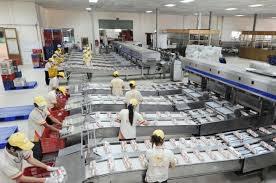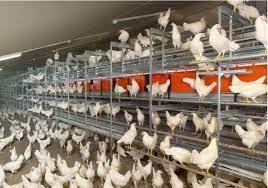 As we near the end of 2021 it is appropriate to consider what the new year has in store for us. The egg industry is part of agribusiness which in turn is a large component of our economy. We are obviously influenced by both national events and interaction with trading nations that directly or indirectly affect margins. Factors that will be relevant to profit in 2022 include:-
As we near the end of 2021 it is appropriate to consider what the new year has in store for us. The egg industry is part of agribusiness which in turn is a large component of our economy. We are obviously influenced by both national events and interaction with trading nations that directly or indirectly affect margins. Factors that will be relevant to profit in 2022 include:-
The World Economy
- Economists project a growth rate of four percent with 90 percent of those surveyed falling within a range of three to six percent. A growing economy will be beneficial for our industry both with respect to domestic consumption and exports.
International Relations
- Our relationship with China will determine in large measure the volume of corn and soybeans that will be exported to that Nation, directly influencing production cost.
COVID
- The U.S. has been burdened with COVID since February 2020. The infection is now endemic in the U.S. and given the situation in developing nations the emergency of new variants following Omicron should be expected. The U.S. will only be able to resume a pre-COVID way of life if new and more specific mRNA vaccines are developed and more importantly that they are administered to a wider proportion of our population. Other preventive measures, including masking, social distancing, and avoiding large gatherings, will probably be necessary through the summer of 2022. Annual boosters against both COVID and influenza will become routine.
Congressional Gridlock
- The unfortunate polarization of our electorate will ensure that any far-reaching legislation is unlikely to be enacted. Bills that receive bipartisan support, such as the Ocean Shipping Reform Act of 2021, will be passed but we will have to rely on the professional managers within federal departments for continuity of services, stability and progress
Environmental Issues
- Sustainability will become more important with both consumers and customers demanding renewable energy and biodegradable packaging. Customers and especially the major chains and also financial institutions will require metrics to confirm progress in reducing greenhouse gas emissions and conservation of water and other resources.
 Labor
Labor
- Absent meaningful immigration reform wage rates will rise in an inflationary economy with some strong regional impacts. In addition to salaries and wages, employees will demand benefits relating to health insurance, childcare and leisure time. The increasing cost of manual labor will result in adoption of mechanization. Specific reference is made to robotic case packers with the potential to displace the highest concentration of labor in a packing plant.
Disease Control
- Avian influenza represents a clear and present risk to the industry. Although progress has been made in improving both structural and operational biosecurity, sporadic outbreaks are inevitable. With current contingency planning, introduction of avian influenza into commercial units by migratory waterfowl should be contained as with the 2016 and 2020 isolated cases in turkeys in Indiana and the Carolinas respectively.
- The past decade has seen the adoption of Marek’s-virus vector vaccines for IBD and ILT. We can anticipate new products based on mRNA technology that may provide higher levels of protection against viral diseases. Egg production presents more disease challenges than the broiler industry due to housing large numbers of hens on multi-age complexes with long-lived flocks requiring durable protection.
Regulation
- In 2022 the industry can expect greater scrutiny by EPA and OSHA. There will be more oversight over disposal of waste predicating installation of systems to convert manure to a saleable product establishing additional cash streams for producers.
 Cage Conversion
Cage Conversion
- Transition from conventional cages to alternative systems, including in-line complexes with aviaries, will continue but possibly at a slower pace consistent with demand. Cage-free eggs are now a commodity subject to the same pressures as generics. Although 30 percent of hens producing shell eggs are housed in alternatives to cages, the industry will still have to fund replacements estimated to cost $6 to $7 billion. This will include housing for rearing pullets and establishing some new complexes with modern packing plants and feed mills.
Barbara and I and the team at EGG-NEWS, including contributors, our transcribers, and web management, extend to our sponsors, subscribers and the entire industry our best wishes for 2022. Our hope is for a disease-free, profitable and above all productive and enjoyable year.